Well, Prince, so Genoa and Lucca are now just family estates of the Buonapartes. But I warn you, if you don’t tell me that this means war, if you still try to defend the infamies and horrors perpetrated by that Antichrist—I really believe he is Antichrist—I will have nothing more to do with you and you are no longer my friend, no longer my “faithful slave,” as you call yourself!
—Leo Tolstoy, War and Peace1
Both the history of the present and psychoanalysis teach us that at the beginning there was a traumatic event, or a series of traumatic events, to which our experience never stops referring. There is something missing, however, in this post-traumatic approach. There is some insufficiency here. What do historians say where collective traumas such as wars, the Holocaust, or genocide are concerned? Normally, they express their belief that these traumas can be worked out, that the function of memory is to shed light on these events, to make us aware and conscious of them, and thus to prevent their repetition in the future. In its turn, psychoanalysis, at least in its obvious, clinical form, addresses an individual traumatic experience, which declares itself through a series of symptoms, and which can potentially be cured. This is of course a simplification, but I just want to be clear that there is something these scientific practices have in common—namely, a certain idea of the present, which can be cured, and of the future, which by this remedy can be saved. In both cases, however, a reference to the traumatic past is necessary—without this, recovery or redemption is impossible.
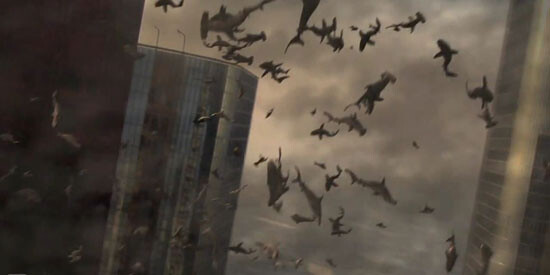

I propose, instead of trauma, to talk about catastrophe. The difference between the two is that one cannot really recover after a catastrophe, as one normally recovers after a trauma. Catastrophe is meta-traumatic. It happens absolutely: at the beginning there is—there was—always already the end. Catastrophe defines the borders of a collective and the true sense of what we call history. By catastrophe I mean, of course, what people do to other people or to nature, and what nature or gods do to people: wars, genocide, bomb explosions, hurricanes, earthquakes, volcanic eruptions, but also certain legendary events, like the expulsion of humans from Paradise, the Flood, and of course, the Apocalypse. Above all, I am thinking about the catastrophe of one’s own existence, this apocalypse of the now—the irredeemable nature of a single present moment. You cannot change anything; the worst is what just happened: your beloved just died, your child just died, a giraffe in the zoo just died, god died, too, you yourself just died or woke up in your bed in the body of an uncanny insect, like Kafka’s Gregor Samsa.
As opposed to what is usually said, catastrophe’s time is not in the future, but in the present, which we can only grasp as the past, because it flows, just as the waters of the Flood: time itself is catastrophic. Catastrophe is what already happened, no matter how long ago—it happened in prehistory, or it’s happening right now, although people are still expecting some bigger, ultimate catastrophe in the future, as if the previous ones did not really count. I want to make this point as clear as possible. Our collective imagination, overwhelmed by all kinds of pictures and scenarios of a future final collapse—be it another world war, Armageddon, an alien invasion, an epidemic or a pandemic, a zombie virus, a robot uprising, an ecological or natural catastrophe—is nothing but projections of this past-present. We project onto the future what we cannot endure as something which already occurred, or which is happening now. We still believe that the worst is yet to come—it is a perspective, but not a reality, and therefore our reality is still not that bad. A fear of the future and anxiety about some indefinite event (“we will all die”) is easier to suffer than a certain, irreparable, and irreversible horror that has just happened (“we are all already dead”).
There is, however, a difference between reality (which is still not that bad) and the real. There are two times: the time of so-called reality, and real, or catastrophic, time, which flows, irreversibly, like music. The time of so-called reality gives us a delusion of the present and the future, to which we are dedicated and where we believe there is salvation. We look to the future and for the future; we have visions of future catastrophes, and these visions prevent us from grasping the catastrophe of the real, or the real catastrophe, which just happens. Only Walter Benjamin’s angel, Angelus Novus from Klee’s painting, sees history as “one single catastrophe,” at which he looks back with horror: “The angel would like to stay, awaken the dead, and make whole what has been smashed. But a storm is blowing from Paradise; it has got caught in his wings with such violence that the angel can no longer close them.”2
An early and well-known version of the final worldwide catastrophe is presented in chapters 6–8 of Genesis. You all know the story: at a certain moment, God regretted what he had created, because people committed too much sin. He decided to destroy everything, to erase all flesh from the face of the earth in order to give humanity another chance. Although animals didn’t commit any sins, they too had to share this destiny. Along with his family, Noah was obliged by God to take along animals of all species—of every clean animal by sevens, male and female, and of every unclean animal by couples, male and female.
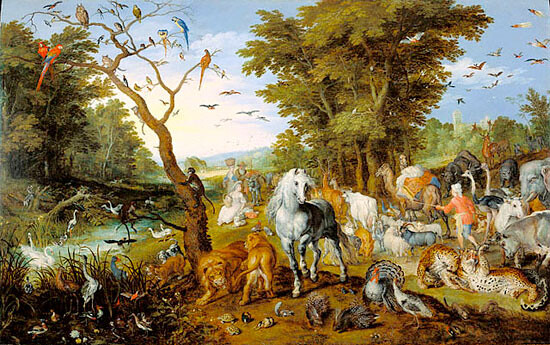

In some paintings dedicated to this story, we see the ark, Noah’s family, and an enormous crowd of animals queuing to get in. Perhaps there was panic, like in our apocalyptic movies where there is a very limited transport vessel and an unlimited number of people trying to board it. It is the only way to be saved from the virus, from the zombie attack, or, just like in Noah’s case, from some global natural disaster: two, four, six, seven—“No, sorry,” Noah may say to the last in line, “we have enough of your kind.” The last of each species enters, the doors of the ship are closed, the abyss of the sky opens, and cold waters cover the earth.
In the recent American film version of this story by Darren Aronofsky, the eponymous Noah (Russell Crowe) doesn’t really get any direct instructions from God. He only gets signs, which he decodes in his own way, and perhaps incorrectly. From the very beginning, when he starts to build the ship, until the end, when he desperately goes on drinking upon arrival, he is constantly doubting his interpretation of God’s will. At a certain point, all of the preselected animals, already in order, simply come to the ark and occupy their respective places. Of course, God cannot talk directly to this Noah, as he did to the other Noah of Genesis, because this new Noah is supposed to be a man of free choice—a true American who will save the world. What is interesting about the film is one of Noah’s dream-like visions: a water column full of dead and dying, drowning bodies of humans and other animals. That’s how a catastrophe might really look from inside, from the point of view of the one who is there in the water—here is a girl, hands up, here is a small elephant, a snake, a mess of beasts of all sizes, all slightly losing their power of resistance and going to the bottom, together with plants, fragments of things, and debris.
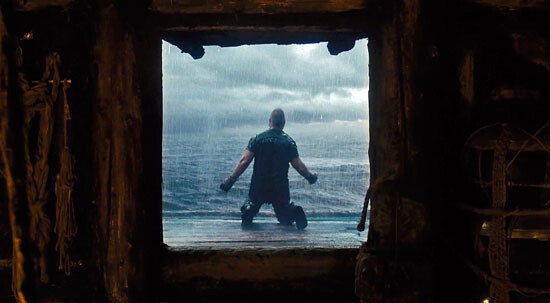

Most often we tend to identify ourselves with those who will be saved. We think of ourselves as one of those chosen seven of our species who were taken onboard—one of those who managed to go through the holy police cordon, behind which the damned, the sinners, the infected, the losers, and all the others were left. In our reality-time imagination we all belong to Noah’s family; we look at the disaster from outside, from the ark, so that only the water’s surface can be seen, and not what is going on in its depths—in the real-time of the catastrophe. It still did not happen to us, it happened to someone else, and for those in the water, it’s really happening—that’s why I say that they are living through, or rather dying through, a real, or catastrophic, time. In reality-time, in turn, the waters are still coming closer and closer, the catastrophe can and will happen, and we need to be prepared for it—at least that’s what popular Christian culture teaches us, constantly bringing us new material for daydreaming about our disastrous future (in which, if we are good enough, we will be finally saved).
Some people are still trying to search for signs of a forthcoming apocalypse in the Book of Revelation, the final book of the New Testament, as if ignoring the fact that someone named John, the author of this book, dating approximately from the first century AD, proclaimed that “the time is at hand, all this will happen shortly.” Although all the relevant data are encoded according to an opaque biblical numerology, most researchers who address this question seem to agree that the number of the beast of the Apocalypse—a numerical version of the Antichrist—points to the name of Nero the Emperor of Rome, who, together with Domitian, was known as a very cruel dictator, massacring and persecuting early Christian communities. As Engels indicates in his short essay on the Book of Revelation (1883), with a reference to Ernst Renan, these communities in that era “were rather like local sections of the International Working Men’s Association.”3 The author of the book was himself most likely one of the victims of this mass repression, and he wrote this book on Patmos Island, to which he was exiled by the Romans for believing in “the word of God and for the testimony of Jesus Christ.”4
The very word Apokalypsis, from the Koine Greek, means “unveiling” or “revelation.” It unveils and reveals the truth about a certain reality. As far as it unveils (i.e., unveils what is), etymologically, the apocalypse is always now. “How Christianity looked in 68 [AD] we can here see as in a mirror,” Engels says about the Book of Revelation, thus perfectly grasping a mirroring relationship between reality and the real, revealed through this peculiar numerology.5 In this sense, Revelation is a book on history, which depicts the religious and class struggle of that time, and addresses Christians with a call for solidarity: note that John does not address just anyone; his book contains messages for the seven churches of Asia, i.e., the existing Christian communities of his day. “The apocalypse is now, don’t give up”—that’s how one would now translate John’s message.
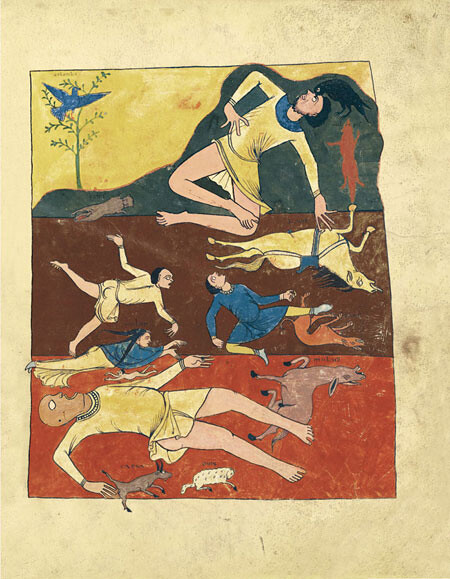

If we believe that John’s apocalypse was already at hand, doesn’t this mean that, for now, the catastrophe he revealed has already happened, the world is over, and we are now all living in the post-apocalypse? And if the world is over, how is it possible, then, not to give up? Alexander Men, a Russian Orthodox priest, theologian, and biblical scholar, who was murdered in 1990 by an axe-wielding assailant, replies to this question in his lecture dedicated to The Book of the Revelation (1989): “The end of the world is a permanent reality; it constantly repeats.”6 Men interprets it in a very Christian way: there is a catastrophe, and there is a salvation; all turning points in history are apocalyptic, the struggle between good and evil repeats again and again, and the good may even win each time a believer opens the door of his heart to Jesus, who knocks there.
But isn’t it true that, if there is no god, a catastrophe should happen alone, without the necessary supplement of salvation? In this case, one can still say that the end of the world is a permanent reality. This will just mean that the time of the real sometimes simply catches reality-time by its tail, or breaks its screen, behind which there is neither future, nor even present. The catastrophe of the real makes the reality of the catastrophe permanent. That’s how one would explain (although there are various possible explanations—since the story is true, its interpretation is infinite) the fact that the event of the apocalypse constantly repeats.
One of the relatively secular, modern versions of the apocalypse is the idea of the end of history, presented by Alexander Kojève, based on his (mis)reading of Hegel. While for Hegel the movement of spirit is both historical and eternal, and the end can be understood in terms of the goal of history, which coincides with the dialectical development of reason, knowledge, and so forth, Kojève simply declares that history is over—that nothing really new can ever happen on earth. It seems that there is nothing catastrophic about this version, except for its assertion that there is no more future.
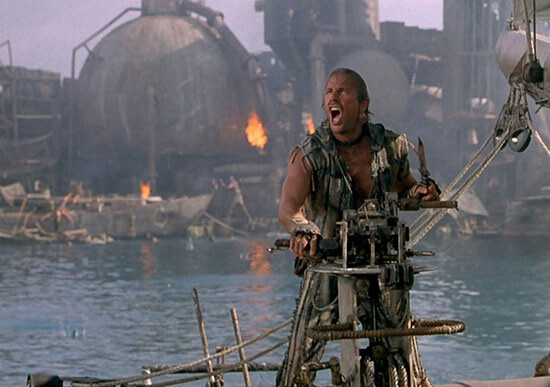

To make a long story short, the beginning of time, according to Kojève, coincides with the appearance of man. Before this moment, there is no time. There is only natural being, or space, and animals that inhabit this space. History starts when, at a certain point, one of those animals turns into a man. The appearance of man as an active, suffering, fighting, and working nothingness will introduce history and time, and in the process, will negate the naturally given multitude of beings for the benefit of his supernatural, ideal goals. Human beings open history, which will be the history of struggles, wars, and revolutions through which they actively change the world.
The point is that the end of history should coincide with its beginning, and at the end of History, human beings should turn back into animals. Kojèvian history goes around only once, with no repetition, and this is the history of becoming human, which is already over. To finalize history, man has to create a universal homogeneous state of mutual recognition—a state of the total satisfaction of all desires. At the end of history, man does not need to change the world, to work and to fight any longer; satisfaction is possible here and now.
Following Kojève’s logic, this point was theoretically already achieved—after the battle of Jena, since even Hegel saw Napoleon as a world spirit riding on horseback:
In and by this battle the vanguard of humanity virtually attained the limit and the aim, that is, the end, of Man’s historical evolution. What has happened since then was but an extension in space of the universal revolutionary force actualized in France by Robespierre-Napoleon. From the authentically historical point of view, the two world wars with their retinue of large and small revolutions had only the effect of bringing the backward civilizations of the peripheral provinces into line with the most advanced (real or virtual) European historical positions.7
I must note that, even before Kojève, apocalyptic expectations of Napoleon were prominent, especially in Russian literature and particularly in Tolstoy’s War and Peace and Gogol’s Dead Souls. Thus, one of Tolstoy’s characters, Pierre Bezukhov, is obsessed with the idea that Napoleon is the true Antichrist, whose name, when written in French and deciphered according to an ancient numerical plate, is the same 666 as the beast of the Apocalypse. The main character of Gogol’s novel, Chichikov, travels across rural Russia and literally collects dead souls. People spread various rumors about him,
among them a theory that Chichikov was Napoleon, escaped from St. Helena and travelling about the world in disguise. And if it should be supposed that no such notion could possibly have been broached, let the reader remember that these events took place not many years after the French had been driven out of Russia, and that various prophets had since declared that Napoleon was Antichrist, and would one day escape from his island prison to exercise universal sway on earth. Nay, some good folk had even declared the letters of Napoleon’s name to constitute the Apocalyptic cipher!8
From Hegel’s Phenomenology of Spirit, which was finished in 1807, to Gogol’s Dead Souls, published in 1842, the Emperor-horseman of the Apocalypse took a long journey through Europe to Russia and back, in order to end up, after one century, celebrated in a secular apocalypse by Kojève. The battle of Jena was a kind of Kojèvian Armageddon, where “European historical positions” finally won, with a universal state now on the way—there was nothing left for it to do but fit a certain social reality, find a good-enough state that could serve as a model for further posthistorical unfolding.
Of course, such a state was soon indicated—first in Kojève’s own, rather ironic note about the American way of life, with its expanding consumption as a perfect example of human beings turning back into animals (although Kojève himself in fact proposed several other exemplars of this, including Russia and Japan). Then followed the more popular and official version by Francis Fukuyama, who literally and positively identified the end of history with American liberal democracy and contemporary capitalism.
A very clear and simple objection to this can be raised from the point of view of communist eschatology. “The history of all hitherto existing society is the history of class struggles,” write Marx and Engels in The Communist Manifesto. As long as the struggle continues, history goes on. While for a capitalist ideologist like Fukuyama, the final battle has already been won (and thus the winner makes history his property, which is now commodified, carefully stored, or just thrown off, but never freely distributed), for a communist, Armageddon is still to come (unless it’s going on right now). A communist cannot let the enemy have history. Just like the early Christians, he doesn’t want to give up: for this reason, he needs to believe that history continues. This makes sense. Imagine if someone stole all the drinkable water on earth. A thirsty crowd is knocking on the thief’s door and asking for water. The water is gone, he says to them, but they know that the water is not gone, that it was just stolen. Capitalism is like this: it steals water. But imagine if there is really no more water, if the enemy really won and has already devastated and dehydrated the land. This is a catastrophe, somehow opposite to the Flood—the Thirst.
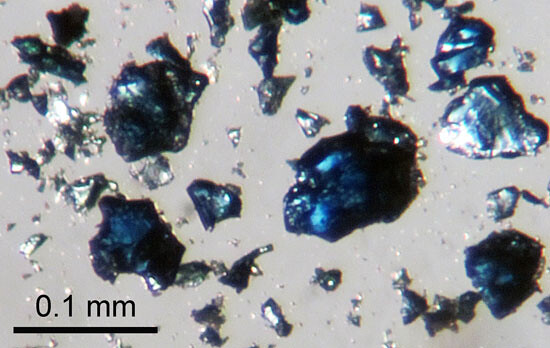

There are, however, some versions of the end of history which, I must say, come quite close to the Kojèvian version, although they explicitly belong to the field of anticapitalist thought. Thus, the theory of the multitude proposed by Antonio Negri and Michael Hardt implies that we are now living in a world of global empire. In this world, the traditional industrial proletariat does not exist anymore—it has already disappeared, and instead of class struggle, a creative multitude of singularities develops out of its own life an immanent resistance to capitalism (thus we have the totality of global capital and its immanent resistance). Traditional national states are dying too, giving way to transnational capital, which does not know borders.
If we try to apply these theses to our reality and read them through our reality-time, they immediately lose any sense (although a lot of Western people take them literally and truly believe that immaterial labor has now replaced material labor, and the global has replaced the national). Of course, material workers are still here, they still create all that we have in our daily lives—all those dresses, cars, Coca-Colas. This world of commodities we live in is a result of the highly exploited and totally noncreative material labor of the people in the third world, of migrants, of the poor.
Though they are not socially represented, material laborers are here, and their existence must not be ignored. The nation-state is still here too—capitalism and the nation-state still go hand in hand, and the imperialist tendencies of capital only increase the role of the nation-state, when it’s needed (look at Russia and Ukraine, at Israel, at Syria, at the new debates about migration policy in Europe, at the new discussion on identity/integration, sovereignty, and so forth). The multitude and capital are not just two entities existing in front of each other: the undead nation-state stands in between them, and when needed, prevents the multitude from acquiring a class consciousness (that’s how, for example, political protests in non-Western countries, where the working class never ceased to exist, easily transform into national/ethnic conflicts). In short, such leftist versions of the end of history seem to be refuted by history itself, which goes on and on.
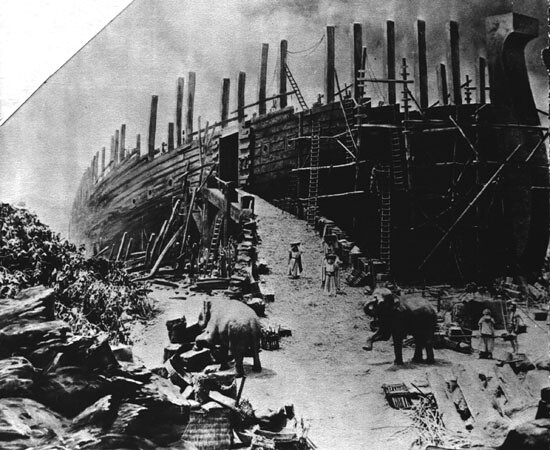

To this reasonable objection to the postmodern anticapitalist form of the end of history, one could reply that these ideas can actually make sense, but from an apocalyptic perspective: they can be read as a new apocalypse for the left. Another evil empire wins, and another community doesn’t give up. And again, like any apocalypse, this one gives way to futurist and messianic visions of a forthcoming catastrophe, followed by salvation. Thus, contemporary accelerationists seem to seriously care about the future; it should be snatched from the enemy’s claws. The future should be pushed forward to the very brink of capitalist catastrophe: capitalism will destroy itself and the world around it sooner or later, but our task is to outrun its catastrophic sprint, to pass ahead. (In a way, the “Accelerationist Manifesto” sounds like the plot of an old Soviet science fiction story, where scientists from a faraway communist future go back to the past with a time machine to prevent a catastrophe.9) But isn’t capitalism itself a catastrophe? Does it not kill workers? Isn’t, finally, the number of the capitalist beast inscribed into the barcode of every commodity, as some crazy Christians never stop warning?
Finally, I will mention yet another thinker who raised an objection to both the capitalist and the communist end of history. In his “Letter to X, Lecturer on Hegel,” written in 1937, Bataille famously says:
If action (doing) is—as Hegel says—negativity, the question arises as to whether the negativity of one who has “nothing more to do” disappears or remains in a state of “unemployed negativity.” Personally, I can only decide in one way, being myself precisely this “unemployed negativity” (I would not be able to define myself more precisely). I don’t mind Hegel’s having foreseen this possibility; at least he didn’t situate it at the conclusion of the process he described. I imagine that my life—or, better yet, its aborting, the open wound that is my life—constitutes all by itself the refutation of Hegel’s closed system.10
This looks like a very personal objection, even a spectacular one (“what about me?”). Bataille continued to develop this argument, particularly in his The Accursed Share, where he links it to his version of political economy. Quite simply, the end of history would mean the end of social inequalities (which is a final goal of communism), and as far as these inequalities continue to exist, history cannot be ended. But even communism cannot really, according to Bataille, effectively achieve its goal—it wants to eliminate differences for the sake of a universal humanity, but humanity itself is divided between the human, the nonhuman, and the more or less human. Humanity itself is distributed unequally—as far as we negate ourselves as animals, history doesn’t have an end, at least a happy end. And, unlike Kojève, Bataille insists that we cannot transform into animals again—becoming human is irreversible (an open wound is produced by humans’ separation from animality, and this is what it means to be a human being).


This appears to be a true deadlock, for which only a yet bigger deadlock can provide a kind of solution. What really eliminates differences is catastrophe: in the waters of the Flood, everyone is equal. I am arguing not for a messianic, but a catastrophic communism, i.e., the end of the world taken in its real-time. In this time, the end of the end of history doesn’t mean that we still have a future, and that it will get better or worse. It will not get worse, it’s already worse. All of these phenomena that are associated with reality and that are supposed to reemerge after the new beginning of history—wars, repression, butchery, and so forth—are really visions of our present zombie apocalypse. The end of the end as the real end would mean an encounter between reality-time and real-time. It would force us to accept the fact of our real-time apocalypse, and to take it over as the only true revolutionary situation—a situation where there is no hope, but only despair. In this situation, we cannot keep waiting for a future catastrophe (with a happy end); a messianic moment of hope, of believing in the future and in the idea that we are still full of life, puts us to sleep, lost in dreams. Only when already dead, and facing no future, do we really have nothing to lose.
Leo Tolstoy, War and Peace, trans. Louise and Aylmer Maude →
Walter Benjamin, “Theses on the Philosophy of History,” in Illuminations: Essays and Reflections, ed. Hannah Arendt, trans. Harry Zohn (New York: Schocken, 1969).
Frederick Engels, “The Book of Revelation” →
Revelation (The Apocalypse of John) 1 →
Engels, “The Book of Revelation”
Alexander Men, “Apocalypse” (in Russian) →
Alexander Kojève, Introduction to the Reading of Hegel: Lectures on the Phenomenology of Spirit, ed. Allan Bloom, trans. James H. Nichols, Jr. (New York: Basic Books, 1969), 160.
Nikolai Gogol, Dead Souls, Part 5 →
Alex Williams and Nick Srnicek, “#ACCELERATE MANIFESTO for an Accelerationist Politics” →
Georges Bataille, The Bataille Reader, eds. Fred Botting and Scott Wilson (Oxford: Blackwell Publishing, 1997), 296.

